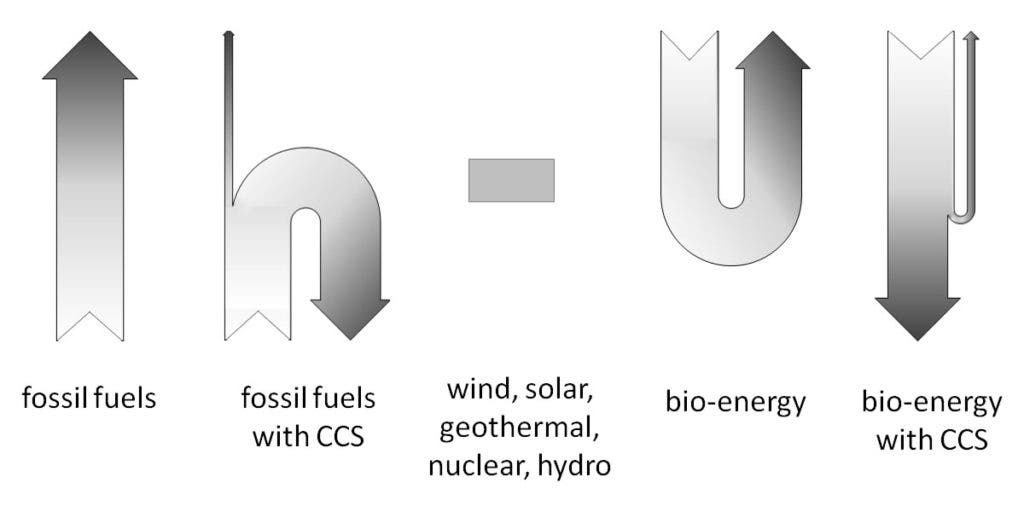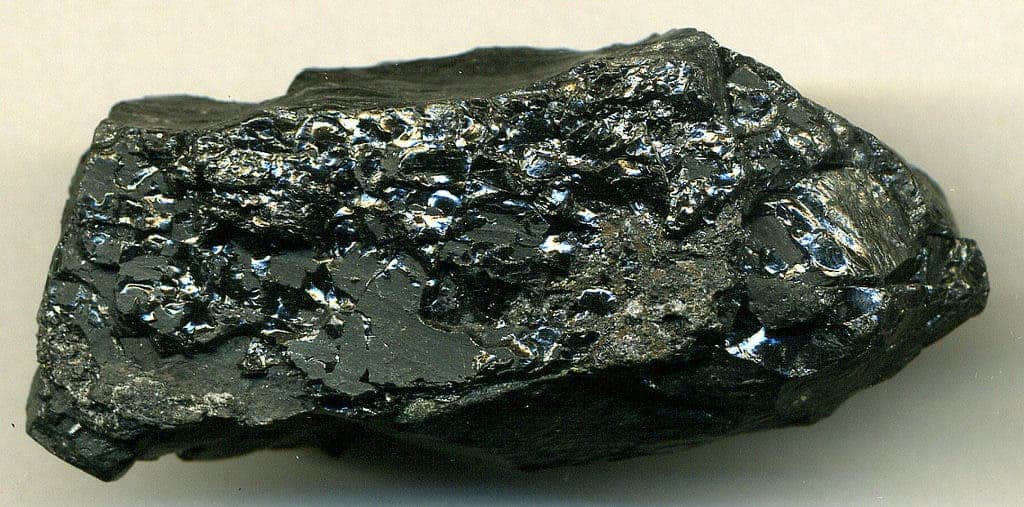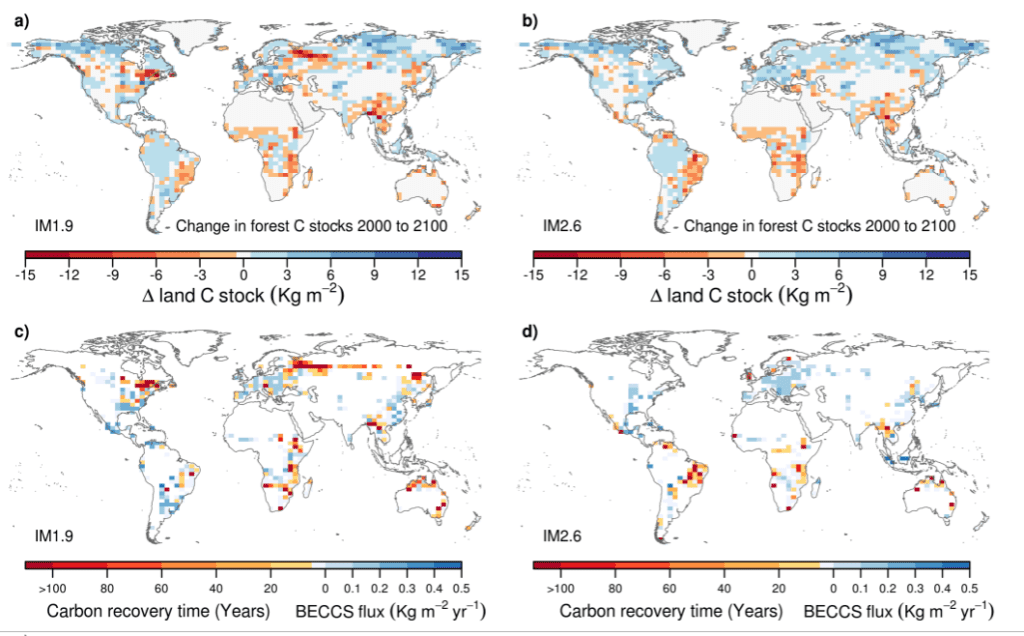Carbon capture can definitely help our efforts of curbing climate change — but in many areas, we may be better off by simply maintaining forests, a new paper suggests.

Image via Pixabay.
By now, we’re pretty well committed to a future that includes one degree (pun intended) or another of climate change. Carbon dioxide (CO2) takes a while — hundreds of years — to break down in the atmosphere. Even if we were to stop all emissions right now, future generations will still feel the effects of these gases in shifting climate, changing ocean patterns, and their ecological implications.
With this in mind, one idea has been bounced around with increasing optimism: carbon capture. The term broadly refers to technologies that can suck up CO2 and then lock it out of the atmosphere. One particular form of this tech, biomass energy with carbon capture and storage (or ‘BECCS’), has garnered a lot of optimism. BECCS-type approaches propose the use of crops to capture CO2 out of the atmosphere; these crops are later used to fuel power plants, and the resulting CO2 is stored underground, in bedrock.
It’s like having your CO2 and storing it too. Which is ideal.
However, BECCS may not be the silver bullet many people hope it to be, a new paper reports. While it sounds nice on paper, in practice BECCS power stations could end up increasing the levels of CO2 in the atmosphere, the authors warn.
Between a rock and a hot place
The study shows that for BECCS to have a meaningful impact on CO2 levels in the atmosphere, we’d need to convert massive expanses of land into fields to grow crops. In wooded areas, this ends up as a net-carbon-positive affair — replacing forests with crops would actually leave more CO2 in the atmosphere than doing nothing.

Image credits Elrapto / Wikimedia.
With this in mind, the team reports that protecting and regenerating forests is a better option than BECCS in many cases.
“The vast majority of current IPCC scenarios for how we can limit global warming to less than 2°C include BECCS,” said lead author Dr. Anna Harper, from the University of Exeter (UoE).
“But the land required to grow biomass in these scenarios would be twice the size of India”.
The team used a cutting-edge computer model known as IMAGE to gauge how levels of greenhouse gases will evolve in the atmosphere over time. The model takes into account factors such as global vegetation and soils, but also factors such as economics, energy policy, resource availability, population dynamics, or climate change projections.
They then ran scenarios of land use that would be required to stabilize climate at less than 1.5°C and 2°C over pre-industrial levels, respectively. In areas where these crops would replace forests, BECCS-style approaches would actually increase the levels of CO2 in the atmosphere, they report.
“In some places BECCS will be effective, but we’ve found that in many places protecting or regenerating forests is much more sensible,” says co-author Dr. Tom Powell, also at the UoE.
“Carbon removed from the atmosphere through BECCS could easily be offset by losses due to land-use change. If BECCS involves replacing high-carbon content ecosystems [e.g. forests] with crops, then afforestation/reforestation and avoided deforestation are often more efficient for atmospheric CO2 removal over this century than BECCS,” the paper explains.
No universal solution
The effectiveness (or ineffectiveness) of BECCS in climate-change-mitigation relies upon the relative change in CO2 carbon capacity compared to the previous ecosystem — i.e. how much or how much less CO2 is saved this way. This, in turn, is built on several factors: the choice of crop grown for fuel, the gain or loss of carbon due to the change in ecosystem — i.e. what we do with the plants that used to grow in an area –, how well the system can store the CO2 it produces, and the level of fossil-fuel emissions it replaces from the grid.

Image credits James St. John / Flickr.
In other words, while it may not be the right choice for many areas now, future improvements in BECCS technology can change this. The team didn’t set out to demonize the process. Rather, they wanted to show that we need to apply some discretion in regards to which areas we devote to BECCS-type systems. And, at the same time, that we cannot rely solely on carbon capture to solve our problem.
“Our paper illustrates that the manipulation of land can help offset carbon dioxide emissions, but only if applied for certain, quite specific locations,” says co-author Chris Huntingford, a Professor at the UK Centre for Ecology and Hydrology.
“To meet the climate change targets from the Paris agreement, we need to both drastically reduce emissions and employ a mix of technologies to remove carbon dioxide from the atmosphere,” adds Dr. Harper.
“There is no single get-out-of-jail-free card.”
Which is solid advice in all areas of life, not just climate change.
BECCS and forests?
Given that BECCS-type systems scrub CO2 out of the atmosphere, and that forests store a lot more carbon than regular crops, I asked the team whether we couldn’t merge the two for a super-duper carbon removal system. In my mind, we could grow forests in lieu of crops, and then use the wood for fuel. It sounds sweet in theory, right? I thought so too.
Just as I was waiting to be handed a diploma, Dr. Harper sadly informed me that my fail-proof plan is quite fallible. Forests simply take much more time to grow compared to regular crops.
However, pre-existing forests have already scrubbed a lot of carbon while growing, she told me, so maintaining their health and integrity would effectively keep that carbon out of the atmosphere. Furthermore, fully-fledged forests contain a lot of biomass, which means there are many (and large) roots to feed. They lap up much more CO2 out of the atmosphere than a simple fuel crop could. Proper management and conservation would only see this scrubbing potential increase — and, for many parts of the world, it would simply outshine any benefits BECCS-type processes can bring to the table.
“An important point is that the carbon benefit from forests often comes from existing forests, underlining the value of maintaining present-day forests and avoiding deforestation,” Dr. Harper explained for ZME Science in an email.
“Even with more optimistic yet realistic assumptions [about the yield of crops and the efficiency of the BECCS process] there are still about 35-40% of the locations where [maintaining forests is] a better option.”
BECCS-type ventures would make sense in areas that either lack forests today, or those whose forests aren’t lush enough to capture more CO2 than a simple fuel-crop would.

Image credits Harper et al., 2018, N.Comms.
There is, however, one clear advantage of carbon capture over forests — security. One of the effects of climate change is an increased rate of wildfires, spurred on by higher average temperatures and shifting patterns of precipitation. A paper recently published by researchers from the University of California, Davis suggests that this increased occurrence of wildfires effectively turned the forests of California from carbon sinks into carbon sources. Dr. Harper agrees with the point raised by the authors but, instead of giving up on forests entirely, she says we should double-down on our efforts to keep them from burning down.
“I saw that paper recently, and it’s a good point — carbon stored in forests is not guaranteed to stay there. I would say this highlights the point that we need to manage forests if they are being grown for carbon dioxide removal so we can increase the likelihood that the carbon will stay out of the atmosphere.”
“The decision between growing crops, maintaining forests, or growing new forests will always be very location-specific and there’s not one answer that applies everywhere. That study was based on California where the climate lends itself to fires (as we are seeing now, unfortunately), and in those regions it probably doesn’t make sense to invest lots of money into growing a forest,” she concludes.
Asked whether vertical farms could help provide space for fuel crops while maintaining forest integrity, Dr. Harper replied that the current paper doesn’t take such installations into consideration — but that it would be “really interesting to evaluate” their potential in this role.
The paper “Land-use emissions play a critical role in land-based mitigation for Paris climate targets” has been published in the journal Nature Communications.






